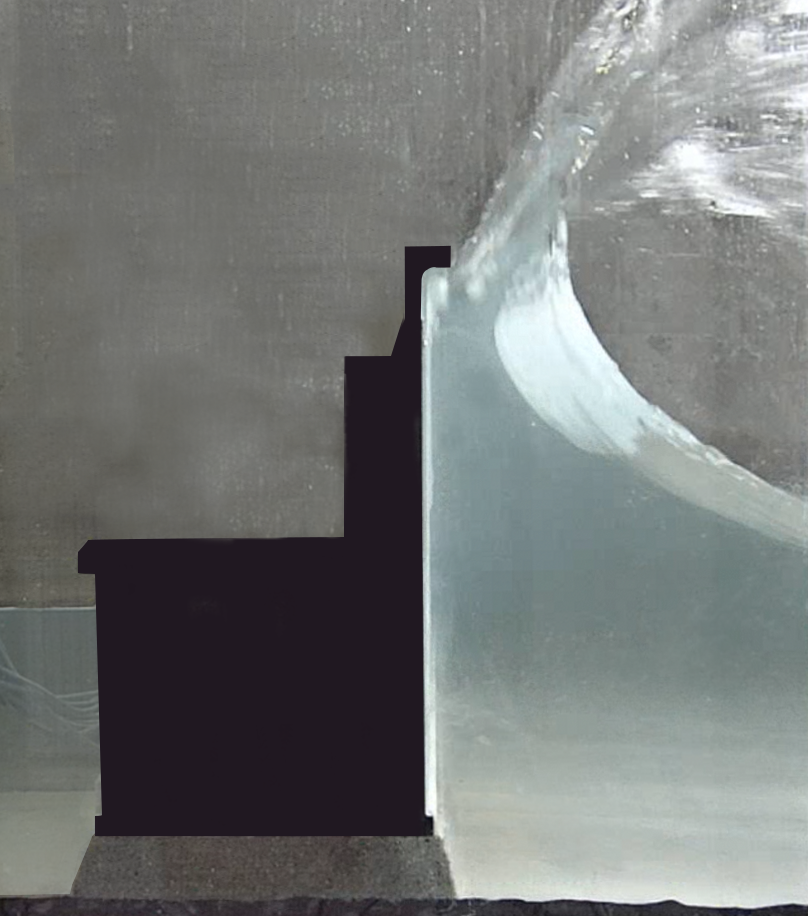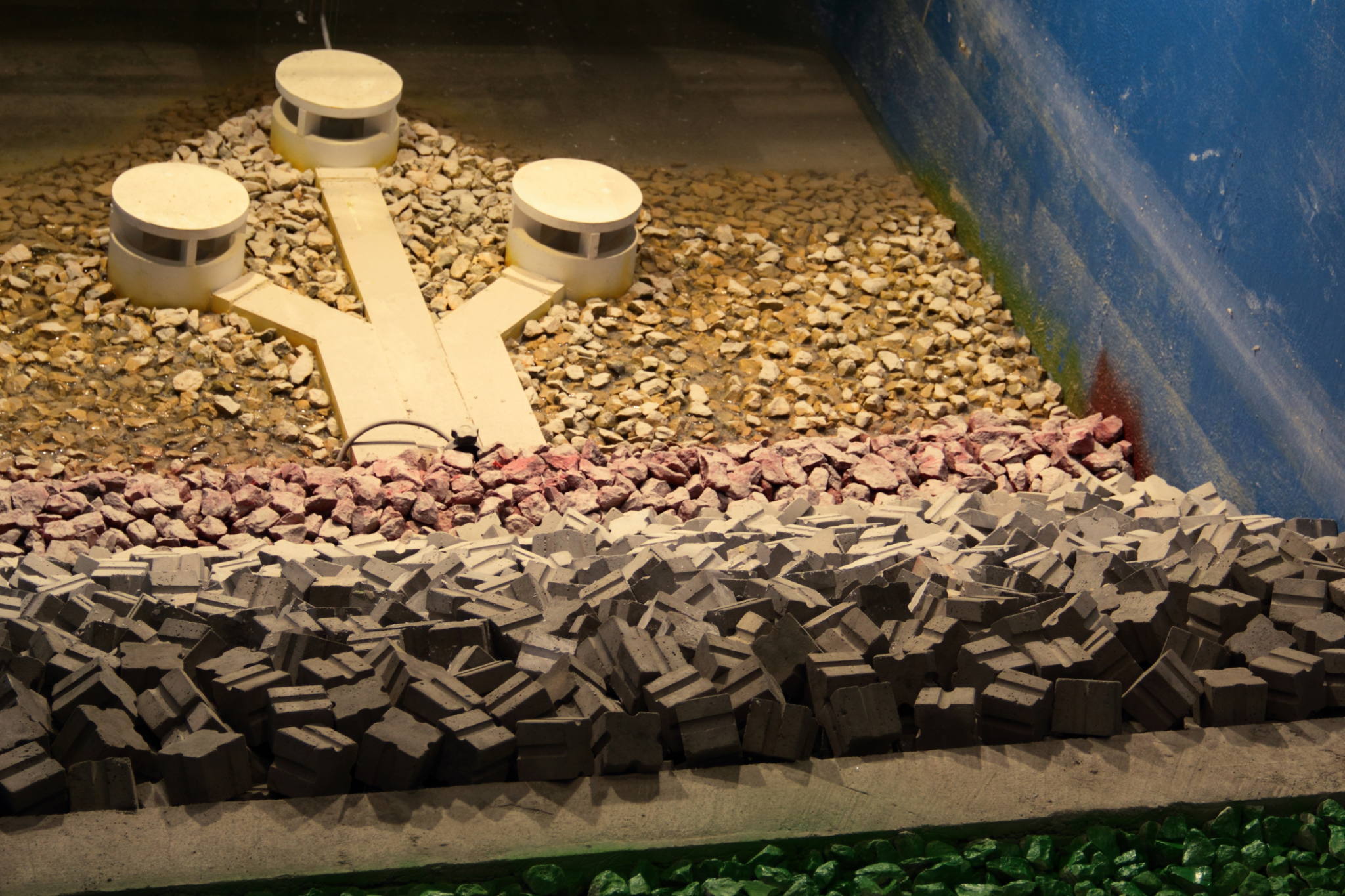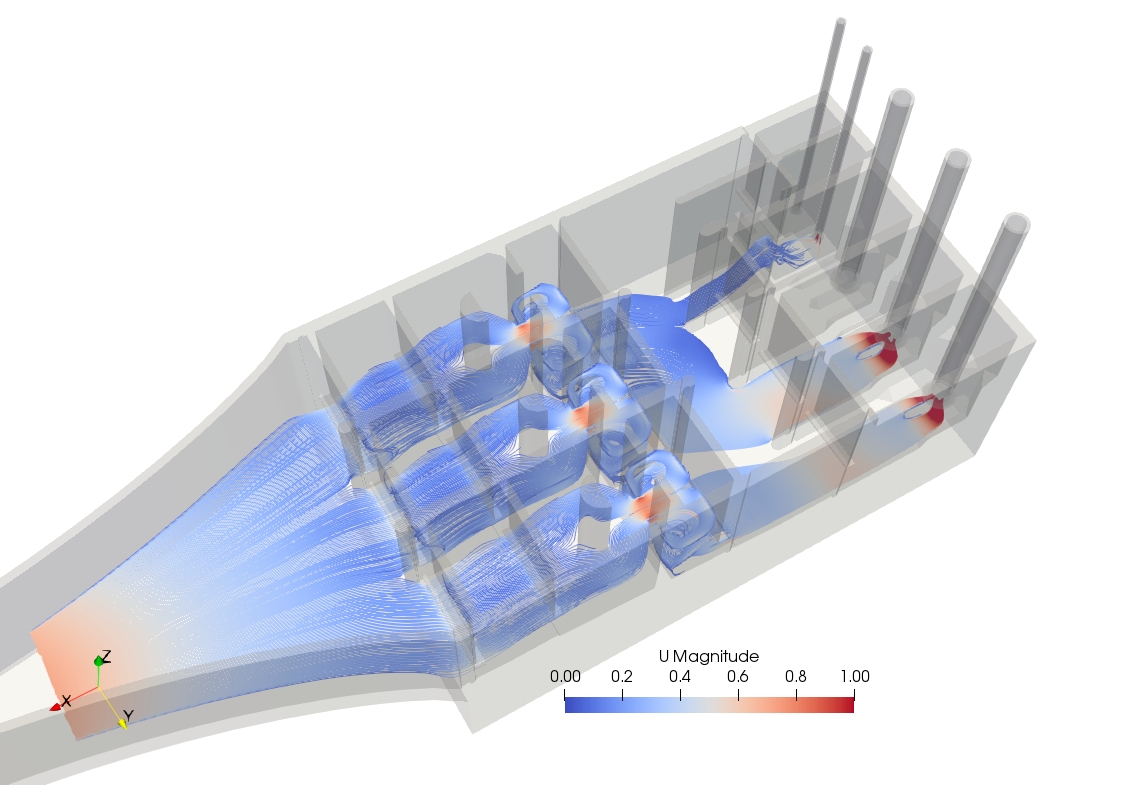
Numerical and experimental analysis of port infrastructures
The design of port infrastructures is key for the adequate development of commercial activities in ports, as key elements in the transport logistics chain. in recent years, commercial ports in Spain have seen the need to make significant investments in the improvement of their facilities, the adaptation of existing infrastructures and in tackling strategies that seek to improve efficiency and competitiveness.
This is mainly due to the constant growth of the Spanish Port System (whose activity represents 1.1% of the GDP, according to State Ports data), moving more and more goods and passengers. Since 2009, port traffic has increased by 5% annually (in tons, according to data from Puertos del Estado). On the other hand, this increase in traffic has been accentuated by the use of increasingly larger vessels, requiring more precise logistics and reducing operational stops as much as possible.
At IHCantabria we propose its design, remodeling and adaptation to the new needs of the ports, with a view to meeting the sustainable development objectives planned by the United Nations.
This allows it to carry out projects where it applies its own state-of-the-art tools that ensure the reliability of the designs for the development of port activities, and puts at their service the experimental facilities of the Great Tank of Maritime Engineering of Cantabria (GTIMC), where the most advanced measurement techniques are applied.
Methodology
We identify the best analysis technique or the combination of several, for the characterization of the behavior of the infrastructures against the action of meteo-oceanographic agents, including extreme events such as tsunamis or the action of climate change.
We carry out a global analysis of infrastructures throughout their useful life, including conceptualisation, design, optimisation, construction of infrastructures, repair and maintenance, and finally, dismantling.
We combine the use of experimental and numerical techniques. At IHCantabria we have more than 35 years of experience in the use of experimental techniques for the design of port infrastructures, including shelter works, mooring and mooring works and auxiliary works. In the last 20 years it has developed its own numerical models for the analysis of the interaction of waves with structures that are a world reference in the field.
We transfer to the productive sector and to the public administrations in charge of port infrastructure management the tools developed and the analysis methodologies through training courses. IHCantabria has given more than 20 courses in the last 10 years, training professionals from different countries such as Spain, USA, Canada, France, Netherlands, Italy, Germany, United Kingdom, Colombia, Costa Rica, Mexico, Australia or India.
AREAS OF EXPERTISE
Physical and numerical modeling of the stability and functionality of seawalls
Structural and functional design of seawalls and berthing and mooring structures using deterministic and probabilistic techniques
Analysis of unique and non-conventional structures using experimental and numerical techniques
Adaptation and remodeling of port infrastructures due to changes in their use or due to changes in climatic agents
Analysis of the vulnerability of port infrastructures to climate change and climate variability
Drafting of proposals to improve and optimize port infrastructures
Analysis of the resilience of port infrastructures to climate variability
Development of operational systems for building seawalls
PARTNERSHIPS
IHCantabria has carried out projects as part of national and international competitive tenders, as well as transfer projects and specialized consulting for leading companies in the sector in an international port environment.
Nationally, IHCantabria collaborates actively with national entities, such as the State Public Ports Authority (EPPE), to manage port infrastructures, and directly with port authorities, for which it develops innovative projects such as SAMOA, for EPPE, and SAFEPORT, for the Bahia de Algeciras Port Authority. It also provides solutions for regional port management entities such as Puertos de Cantabria, Ports of the Generalitat, Ports of Illes Balears, Puertos Canarias, Portos de Galiza and others, either directly with them or through partnerships with companies.
Internationally, IHCantabria collaborates with national and international companies, assisting in the design and construction of unique facilities such as the ports of San Antonio in Chile, Aberdeen in Scotland and Açu in Brazil.
Finally, IHCantabria is actively involved in expert commissions such as the Recommendations for Maritime Projects (ROM), sponsored by the EPPE and which provides a practical guide for the design and management of infrastructures, as well as in different working groups associated with the International Association of Navigation (PIANC).
SIGNIFICANT PROJECTS
2D PHYSICAL MODEL TEST OF DIQUE CALA RAJADA (MALLORCA). UTE E3 – MARCIGLOB CALA RAJADA
The main objective of this project was to carry out tests in a 2D physical model to analyze the stability and functionality of two new designs to improve the breakwater at the marina of Cala Rajada on the island of Mallorca.
The proposed designs aim to improve the general behavior of the protective structure, since the breakwater currently exhibits various functionality and stability problems at its main jetty due to the presence of: structural damage; shifting components in the main layer of the jetty due to the effects of storms; and extreme overflow events, as well as operational problems due to internal agitation.
STUDY TO REDUCE AGITATION AT THE SPORTS MARINA OF THE PORT OF SANTA CRUZ DE LA PALMA BY USING A GATE THAT COMPLETELY CLOSES THE ACCESS TO THE PORT. PORT AUTHORITY of SANTA CRUZ DE TENERIFE
The objective of this project was to analyze the installation of a gate that would completely close the access to the sports marina at the Port of Santa Cruz de La Palma (Canary Islands) to prevent agitation. To do this, a detailed study of the basin was conducted using three-dimensional CFD numerical modeling (IHFOAM) for conditions with and without a gate. In order to obtain the time series at the entrance to the port, which were used as input to the CFD model, the propagation of a selection of representative hourly sea states was first determined using a Boussinesq type numerical model. From those sea states, those that yielded inoperative conditions in the no-gate condition were selected for simulation in the IHFOAM model. Likewise, and given that the seawall that separates the commercial harbor from the sports marina is permeable, a two-dimensional CFD numerical model of this seawall was done prior to the 3D simulation.
2D PHYSICAL TSUNAMI MODELING. ARTELIA Eau et Environnement, S.A.S.
The goal of the project was to build a 2D physical model in a wave tank to study the stability of a dike to protect a nuclear power plant in Turkey against tsunami events.
The challenge of this project was the ad-hoc creation of a unique tsunami generation system capable of recreating the tsunami conditions proposed by the client, since it would have been impossible to conduct this study using conventional systems for generating tsunamis (pumps or pushers).
MARINE CLIMATE ANALYSIS, SEDIMENT TRANSPORT ANALYSIS AND HYDRAULIC ANALYSIS OF THE INTAKE SYSTEM OF THE COMBINED CYCLE THERMAL POWER PLANT IN JAMAICA. IMPULSO INDUSTRIAL ALTERNATIVO, SA
This project involves doing a hydrodynamic analysis using three-dimensional numerical modeling of the intake system and the pumping chamber of the cooling system of the Old Harbour Bay power plant, located on Jamaica’s south coast.
SOFTWARE & TOOLS
EXPERIMENTAL FACILITIES
Universidad de Cantabria headquarters
Directional wave tank
Wave channel
Wave-current channel
Variable slope channel
LET’S TALK.
Would you like to know how we can help you?
Send me a message. I will get back to you as soon as possible
LET’S TALK.
Would you like to know how we can help you?
Send me a message. I will get back to you as soon as possible

JAVIER LÓPEZ LARA
Port Management and Engineering Group Head || Port Infrastructures Expert
We advise you that your personal data will be processed by FUNDACIÓN INSTITUTO HIDRÁULICA AMBIENTAL DE CANTABRIA, in order to manage your request and maintain professional and commercial relations with you. Your data will not be transferred to third parties. This data treatment is necessary to attend your request. Your data will be kept until you unsubscribe from the service and/or after a reasonable time has passed since we attended to your request. You can exercise your rights of access, rectification, cancellation, opposition, portability and limitation of the processing of your data by contacting the FUNDACIÓN INSTITUTO HIDRÁULICA AMBIENTAL DE CANTABRIA, PCTCAN C/ISABEL TORRES, 15, 39011 SANTANDER (CANTABRIA), or rgpdihcantabria@unican.es with a copy of your ID card duly accrediting your identity. In any situation, you have the right to file a complaint with the Spanish Data Protection Agency (AEPD)






